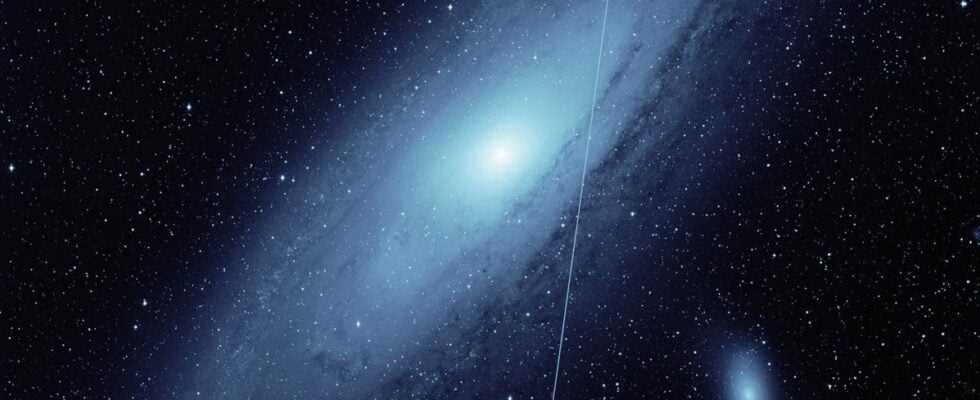At certain times of the day, almost 20 percent of the astronomical images from a California sky survey contain traces from Starlink satellites. This is the finding of an analysis of images taken by the Zwicky Transient Facility (ZTF) at Palomar Observatory near San Diego between November 2019 and September 2021. While just 0.5 percent of the twilight recordings were affected shortly after the start of Starlink’s construction, by late summer of last year it had already been more than 18 percent. At the same time, however, the scientific work is “not greatly affected” by this, since a single strip on the recordings for which the satellites are responsible affects less than a tenth of a percent of the pixels.
Constellations of tens of thousands of satellites planned
Starlink is a project by Elon Musk’s space company SpaceX, which aims to use thousands of satellites in low orbit to connect regions to the Internet that cannot be economically connected via conventional technology. Around 2,000 satellites have already been launched for this purpose, and approval has been granted for more than 2,000 more. However, tens of thousands are planned, and other companies also want to set up their own mega-constellations.
While the growing danger of satellite collisions has recently come into focus, astronomers have been criticizing the plans for a long time because they fear for the largely undisturbed view of space. However, tens of thousands of satellites would impair everyone’s night-time view upwards.
The analysis of the recordings from the Zwicky Transient Facility now provides further data on how large the effects of the satellites actually are. Such sky surveys are particularly affected by mega constellations like Starlink, because they regularly scan large parts of the sky to find changes or, for example, to look for asteroids. The probability that there will be streaks from passing satellites on the many images taken and automatically evaluated is correspondingly high. However, because these are thin stripes, the consequences for astronomy have not been very great so far. The probability that an asteroid or an unknown event is hiding exactly behind such a strip is very low.

The fact that stripes from Starlink satellites can only be seen in twilight images is because they are still being illuminated by the sun while it is already getting dark on the ground. It was already known that mega constellations primarily affect these. At this time of day, among other things, a search is made for near-Earth asteroids that could pose a threat to our home planet. Przemek Mróz, who led the analysis of the Zwicky data, assumes that in future all twilight images will contain at least one streak. He does not expect any effects on later recordings, unless other mega-constellations are set up in higher orbits.
Recommended Editorial Content
External content will be loaded here with your consent.
The researchers also determined that SpaceX’s efforts to dim the Starlink satellites helped, actually dimming them fivefold. Nevertheless, they are still brighter than specified in a standard developed in 2020. The group compiled all of this data in a specialist article that was published in the specialist magazine The Astrophysical Journal Letters has been published. They explicitly point out that their result only applies to the Zwicky Transient Facility. Future telescopes, such as those with significantly more sensitive technology or other tasks, could be significantly more negatively affected by Internet satellites such as those from Starlink. The American Astronomical Society and the European Southern Observatory had already warned of insignificant to extreme consequences for astronomy.
An interactive graphic is included in the article, which is created and delivered by the Berlin service provider Datawrapper. For data protection at Datawrapper see their data protection declaration. Personal or personally identifiable data from readers of the interactive charts is not collected.
(mho)
